To celebrate International Women’s Day 2019, World for a Girl has teamed up with 18 amazing travel bloggers to bring you an epic selection of sites dedicated to inspirational and pioneering women around the world.
From the beautifully restored homes of famous female artists, singers and scientists to poignant monuments remembering ordinary mothers and daughters who endured and fought against unimaginable horrors, these sites and the incredible stories behind them will stay with you long after you finish reading.
So grab a cup of tea and settle in to enjoy this global adventure in women’s history from Senegal to Tasmania. If you don’t have time to read it today, pin it for later to Pinterest or use our handy table of contents below to scroll through the list easily.
Mother Teresa’s House, Skopje, Macedonia
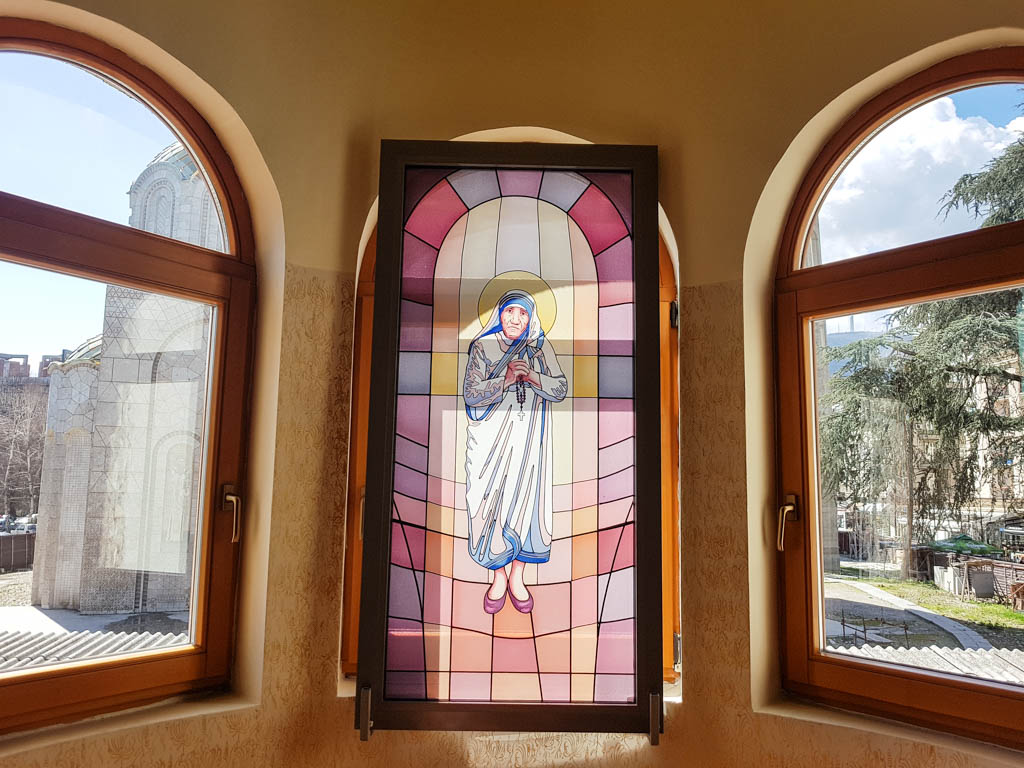
Inside Mother Teresa’s Home, Macedonia. Image: Teacake Travels
In the Macedonia capital of Skopje, on the main street leading towards the main square where Alexander the Great’s statue is ferociously galloping towards war, sits a place of contrasting energy: Mother Teresa’s House.
Born in Skopje in 1910, Mother Teresa is by far the most legendary Albanian-Indian Roman Catholic nun. She believed in love and peace and is one of the most dedicated women in history, vowing to wholeheartedly give ‘free service to the poorest of the poor’.
Mother Teresa’s place of birth is coincidentally in the same square where Alexander the Great’s statue is now (amongst the estimated 283 other statues in this capital) but nothing remains in this spot now other than a slab of concrete.
Instead, head towards Mother Teresa’s Memorial House, which is the church where she was baptised the day after her birth. It’s a beautiful church, which truly reveals its inner peace once you make your way all the way upstairs to the little chapel. Try and find the doves and fish hidden within the stained glass windows! Then just take a break, reflect and find a little moment of calm.
Find Mother Teresa’s Memorial House and all the other things to do in Skopje.
Contributed by Alice Teacake at Teacake Travels | Facebook
Check out World for a Girl’s post on why Macedonia is a great place to visit with a toddler.
Anne Frank’s House, Amsterdam, The Netherlands
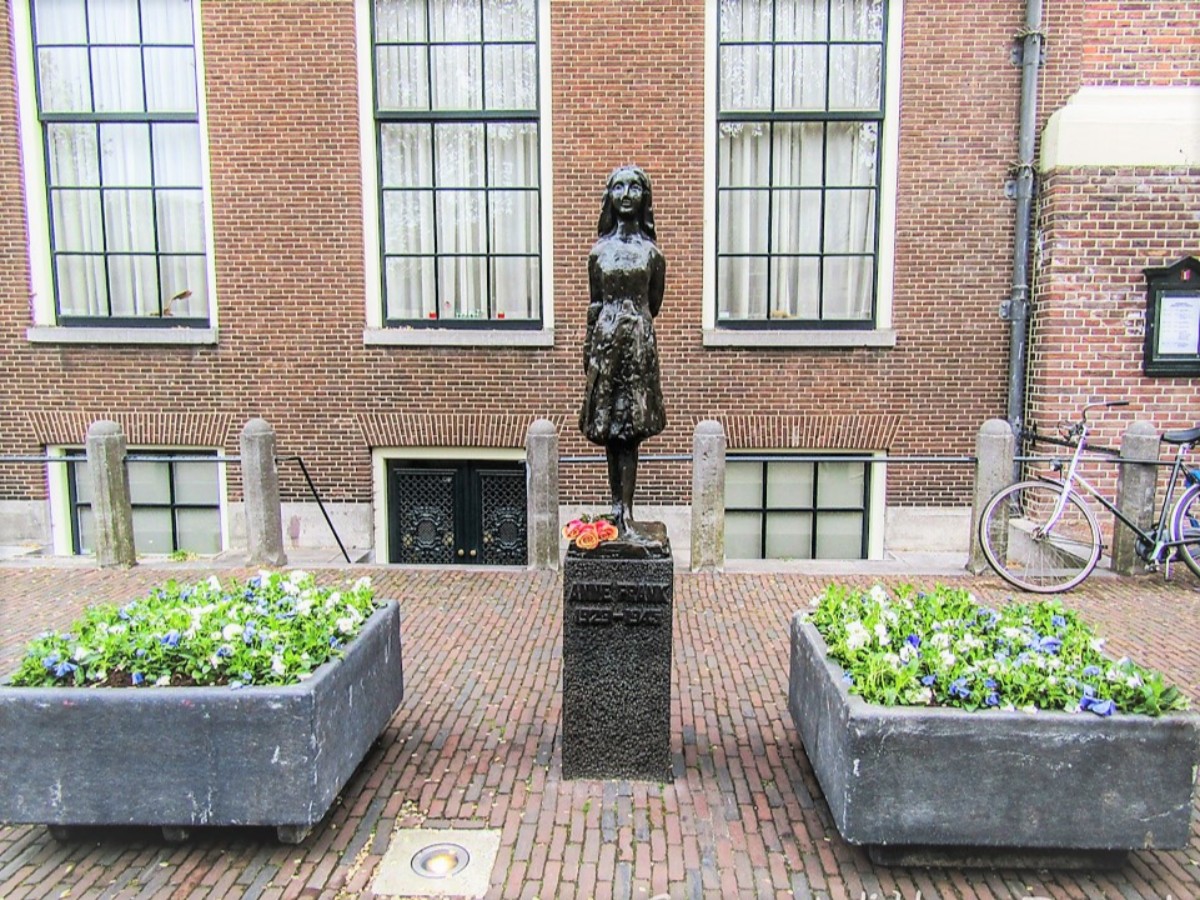
Statue of Anne Frank outside the building she hid in for more than 2 years, Amsterdam Image: Gypsy with a Day job
Anne Frank needs no introduction, as her diary has been published around the world, and impacted the lives of millions of young people. Reading her first-hand account of a life in hiding, and terror brings an emotional understanding to the horrors of war in a way that only experience can. The house and annexe where Anne hid during the Nazi terror that dominated much of Europe still stands, and Anne Frank House is one of the most essential places to visit for travelers in Amsterdam.
In some ways, it is quite a tourist attraction, as it calls to people from around the world. Still, despite the crowds, visitors that have grown to know Anne, and relate to her, have a very meaningful experience visiting her home. Slipping into the secret staircase behind the corner bookcase, climbing to a hidden attic, seeing Anne’s bedroom, with her movie star clippings still taped to the walls… All of this helps us understand Anne just a bit more, and makes her life and tragic story all the more real.
Any woman traveling in Amsterdam should visit Anne Frank House, to get to know Anne, and herself, a bit more intimately. We should all pay our respects and say a prayer for Anne, and take her lessons away with us. Although Anne’s life was short, she has spoken to us all with a powerful voice of a woman, that reminds us the hatred and discrimination has no place in our world.
Contributed by Roxanna at Gypsy with a Day Job | Facebook
The Women’s Museum in Marrakech, Morocco
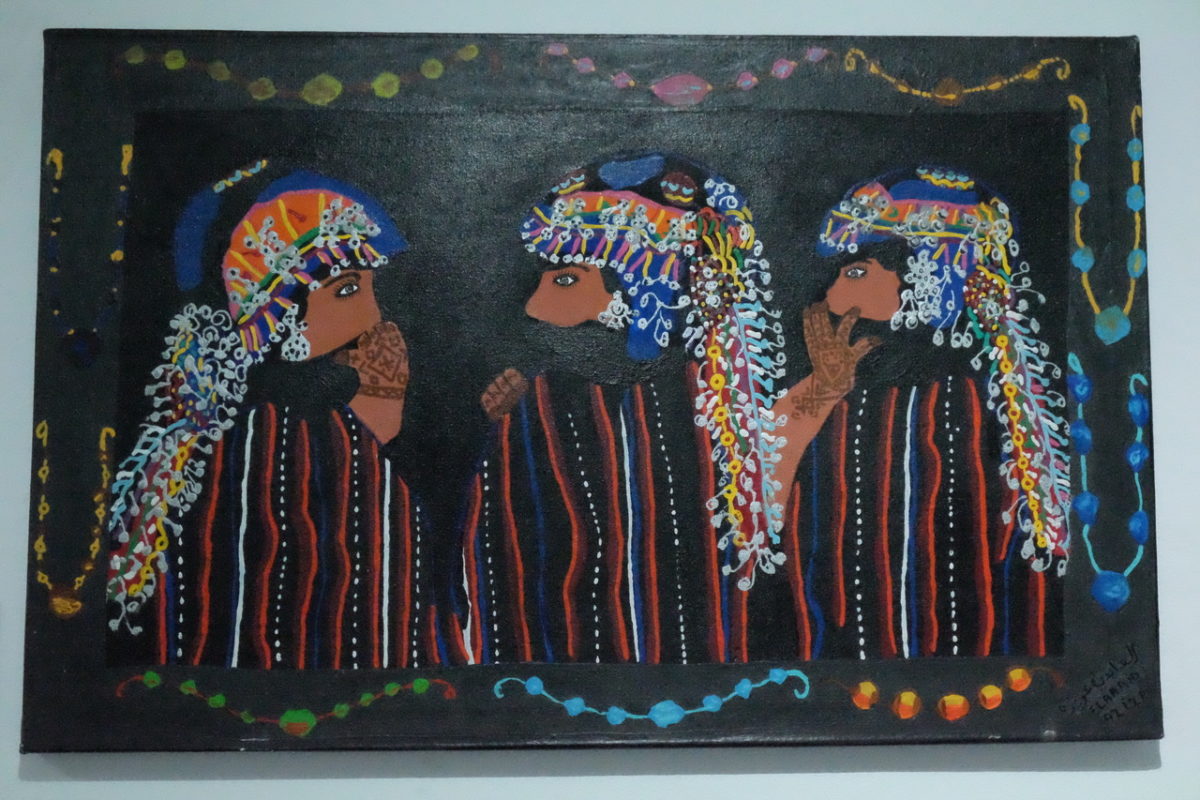
Artwork in the Marrakech Women’s Museum, Morocco. Image: Cultura Obscura
Nestled away in Marrakech’s old town, around the corner from the Le Jardin Secret and surrounded by the city’s famous souk, lies the first North African museum dedicated to women. Marrakech’s Women’s Museum is comprised of three floors. The first two are dedicated to aspects of Berber life such as carpets and traditional dress; not gonna lie, it’s pretty focused on the carpets. The third floor houses temporary exhibits, such as photography and art by local women.
The Berbers (also called Amazighs) are comprised of several ethnic groups indigenous to North Africa. They constitute a great proportion of the populations of Morocco, Algeria, Tunisia, Libya, and Mauritania. They can also be found in northern Mali, northern Niger, and a small part of western Egypt. In Morocco, where they are most prevalent, there are between 14 to 20 million Berbers. As such, Berber culture and traditions are extremely important in Morocco.
Although the museum is small and not information heavy, you can easily get caught up examining the intricate designs and handiwork of the carpets. The information it does have is in Arabic, French and English, except for a film showcasing local life, which is in French and Arabic, but worth a watch nonetheless to see how carpets and dyes are made.
The Women’s Museum opened in early 2018 and remains a hidden gem in the city. If you’re planning a trip to Marrakech, definitely carve out some time to visit.
Contributed by Dagney at Cultura Obscura | Facebook
Museum of Witchcraft in Boscastle, Cornwall, UK
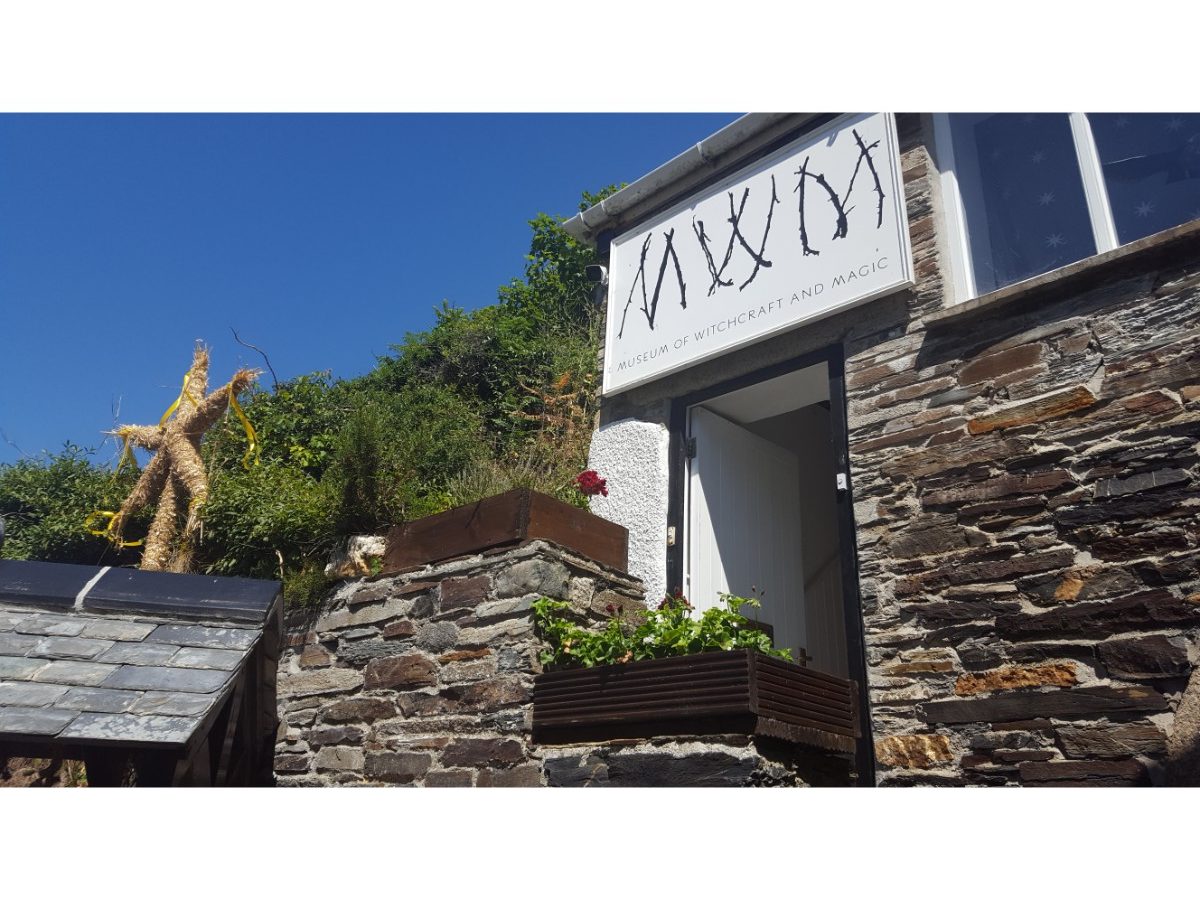
Museum of Witchcraft, Boscastle, Cornwall Image: Live in 10 Countries
When we think of women to be celebrated, we often think of iconic and international famous figures. But the Museum of Witchcraft in Boscastle, Cornwall is something special – it celebrates the local, unsung folk healers who worked in small communities. It’s an absolute must-see on any Cornish itinerary.
They dealt in herbal remedies, were often accused of devilry but were also the first called when someone fell sick – and yes, in some cases, the museum has evidence of their charms and curses. These women were the witches that were accused in trials centuries ago.
The museum has so much that brings alive the world of these local wise women – books in the ancient Cornish language, a tiny doll fashioned from babies clothes and hidden in the eaves of a house (as a fertility charm) and a hundred other curiosities. Forget what you’ve seen on Netflix or read in Harry Potter, real ‘witches’ had powers in their communities, whether you believe they were truly magical or not. In fact, theirs was one of the only ways for women to obtain respect in local communities.
Contributed by Live in 10 Countries.
Frida Kahlo’s Blue House, Coyoacan, Mexico City
Frida Kahlo, known for her unforgettable self-portraits, is a Mexican artist of the early twentieth century that has become a countercultural symbol that extends far beyond the Mexican border. She’s known for her dauntless art but also for her painful and yet exciting life. Her self-awareness and determination, her boldness and her passionate love for her fellow artist and two times husband Diego Rivera, a famous Mexican Muralist, the dedication to supporting the indigenous culture, make her a controversial and outstanding symbol of the women’s emancipation.
She was born in the Blue House, in the vibrant neighborhood of Coyoacan in Mexico City, where she also lived most of her life and where she died.
The Blue House is now a museum that you can visit and immerse into Frida life. A colorful home, reflecting her painting style, where you can see the spaces where she worked on her paintings while recovering from her severe accident
Frida stood out among the painters of her time not only for her works but for her painful personal history. She suffered from Polio when she was a child and nearly died during an accident in her teen years, for which she had to face 30 surgeries. It was during her convalescence that she focused on her paintings, drawings and sketches that would continue to give voice to all her pain and personal emotions and conflicts she experienced throughout her life.
In the museums, you can also see the beautiful dresses and corsets that she used to hide the horrible signs that the accident and the subsequent operations left in her body.
Mexico City and the museum is definitely an unmissable stop if you are traveling through Mexico and you are passionate about culture and art.
Contributed by Isabella at Boundless Roads
Moi-Yo Miller Wall Mural, Geelong, Australia
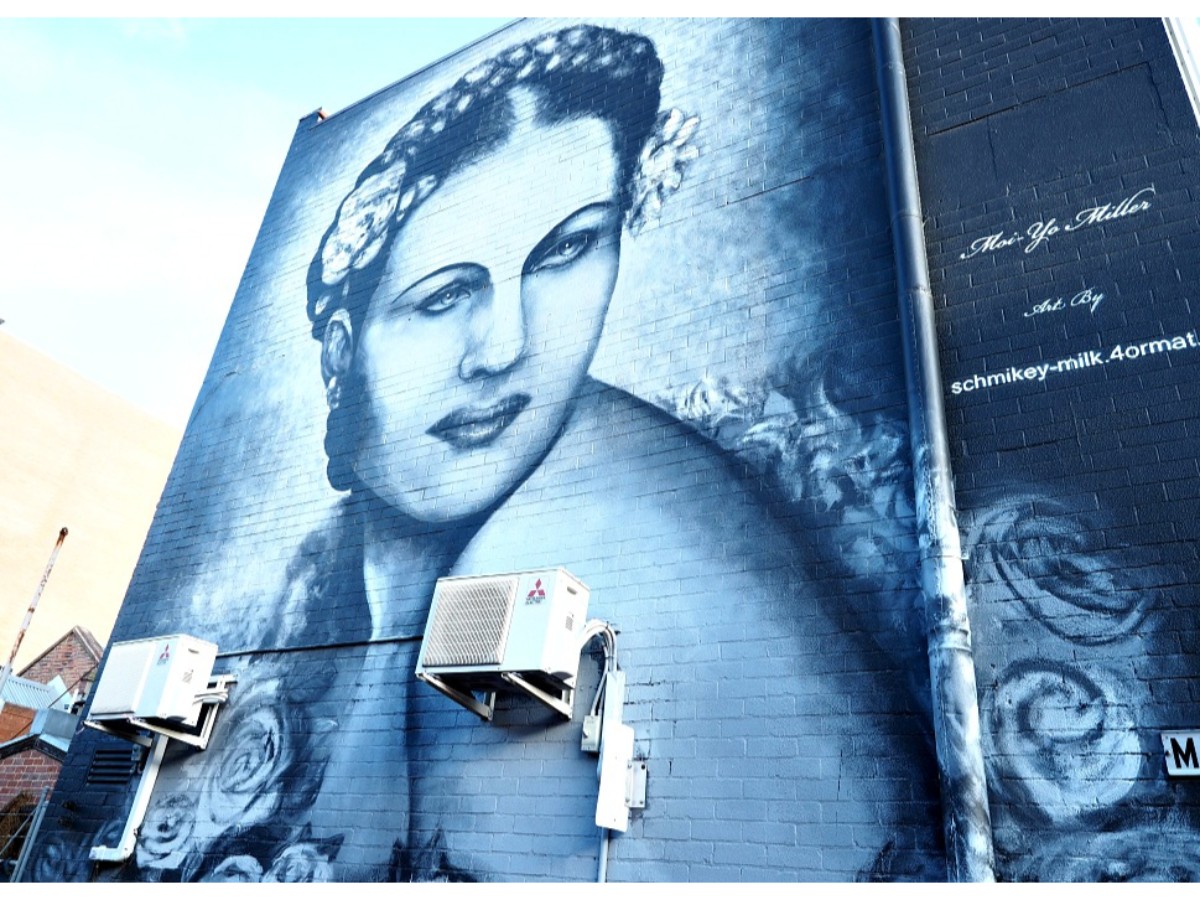
The stunning mural of Moi-Yo Miller in Geelong Image: See Geelong
Moi-Yo Miller was a famously beautiful magician’s assistant from the 1930s golden age of magic. Born in Geelong, Moi-Yo was discovered by the world-famous magician Dante when she was performing in a musical review in Melbourne. For the next 20 years, they toured the world together visiting faraway places like Russia, China and Japan. The show was performing in Berlin when war was declared and Moi-Yo only managed to escape when the King of Sweden intervened.
Moi-Yo was highly regarded by professional magic performers and is considered one of the all-time great magic assistants. She once estimated she’d been sawn in half 11,800 times! She was also revered for her great beauty and was known as Australia’s most beautiful woman. But Moi-Yo had brains too and she brought new life to Dante’s production; updating his sets, costumes, music and choreography. Her changes brought a sense of glamour and elegance to the show.
Once described as ‘A rare flower who was able to fold up like a piece of Chinese silk’ Moi-Yo
Miller died at the age of 104 on September 18, 2018. There’s a stunning mural of Moi-Yo Miller that stops me in my tracks whenever I walk by. It was painted by Michael Cassar and is located on the corner of James Street and Mimms Lane in Geelong Australia.
Contributed by Audrey at See Geelong
International Women’s Air and Space Museum, Ohio, USA
Tucked within the Burke Lakefront Airport in Cleveland, Ohio is a hidden gem of a museum called the International Women’s Air and Space Museum. Boasting free admission, this museum highlights the stories of female aviators and astronauts throughout history, like Katharine Wright, the lesser-known, but not any less impressive sister of Orville and Wilbur or the heroic women fighters of the Women Airforce Service Pilots program during World War II.
While the museum’s footprint is small, its collection is expansive, with artefacts and stories from over 6,000 women that have pioneered air and space exploration, which are rotated through the museum’s intimate space on a regular basis. With informative and well thought-out displays and a knowledge, friendly staff, this museum may inspire younger girls to think of a future in STEM careers; educate older visitors of women’s importance in the space program, and remind all visitors that the sky is truly the limit for women.
Contributed by Jess at Uprooted Traveler | Instagram
Heroinat (Heroines) Memorial, Pristina, Kosovo
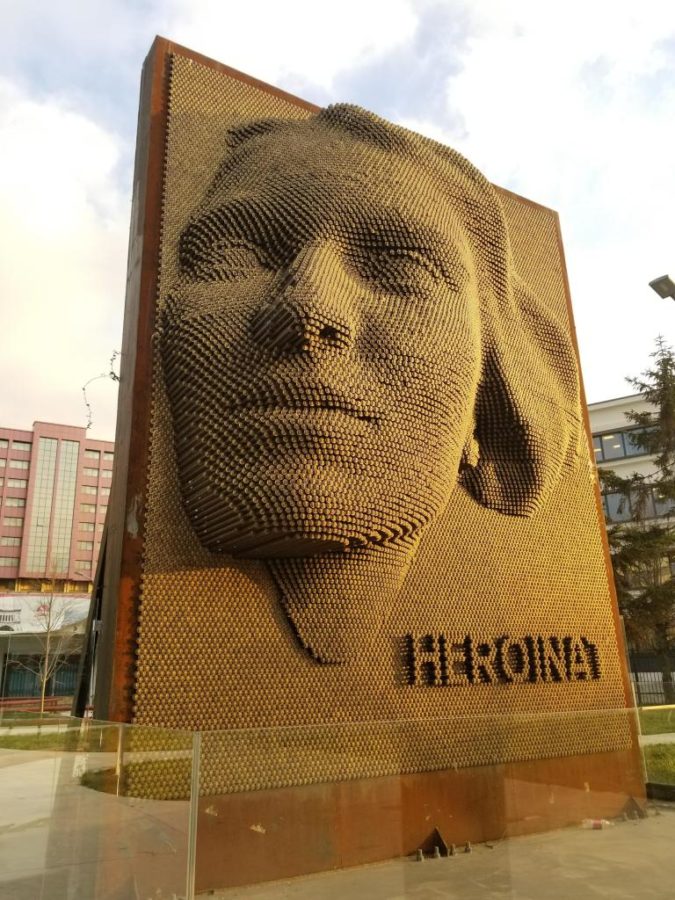
The Heroinat Monument in Pristina. Image: Kosovo Girl Travels
Heroinat (heroines) is a memorial consisting of over 20.000 medals dedicated to the 20.000+ women raped during the last war in Kosovo that ended in June 1999 with NATO intervention against Serbia.
As vulnerable civilians – women, young women and girls, and little girls – became victims of sexual violence during the war and after it became a burden or “shame” for many families – either they own family or their husband’s family – and their voices were kept shut and their stories were untold and unheard. It was and still is a taboo to talk about these women’s sufferings during the war and after it.
This memorial is dedicated to all of them, in recognition of their painful and unforgettable misfortune they endured. Nevertheless, the memorial is there but despite being it opposite the famous NEWBORN monument, one of the most visited spots in Pristina, both locals and tourists seem to close an eye and pass by it in silence as if while pretending it’s not there it never happened. Only last year, a survivor of rape during the war came out openly and shared her story. It brought us all to tears but that’s only the tip of the iceberg. Many of the stories won’t ever be heard as those who lived them have long passed away!
Contributed by Lavdi at Kosovo Girl Travels | Twitter
Is Kosovo a good family travel destination? At World for a Girl we think so, check out why in our Kosovo with a toddler post.
Block of Women Monument, Berlin, Germany
When most people visit Berlin’s city center, they head to spots like the Brandenburg Gate, Alexanderplatz, and Hackescher Markt. What most people miss, however, is a monument called the Block of Women hiding in plain sight. Tucked into a little neighborhood called the Marienviertel, this monument stands on what was once a synagogue before it was destroyed in World War II. It’s quite fitting, as the monument pays homage to the women that protested the Gestapo after thousands of their Jewish husbands, fathers, and friends had been detained.
For a week in early March, 1943, nearly 600 women peaceful protested outside of the building where the prisoners were being held. Miraculously, they were released and the women protestors received no backlash from the authorities despite their great personal risk. As I drive by this monument almost every day, I’m inspired remembering the story of these women who may have appeared powerless to the outside observer, but who were persistent and unyielding in the effort to save the people they loved. They all could have been severely punished for what they did, but they were brave and did it anyway. This year on International Women’s Day, I hope that each one of us, male or female, strives to be a little more courageous in standing up for what is right, just as these strong Berlin women did in 1943.
Contributed by Casey at Carefree Compass | Instagram | Facebook
Musee Henriette Bathily, Musee de la Femme, Senegal
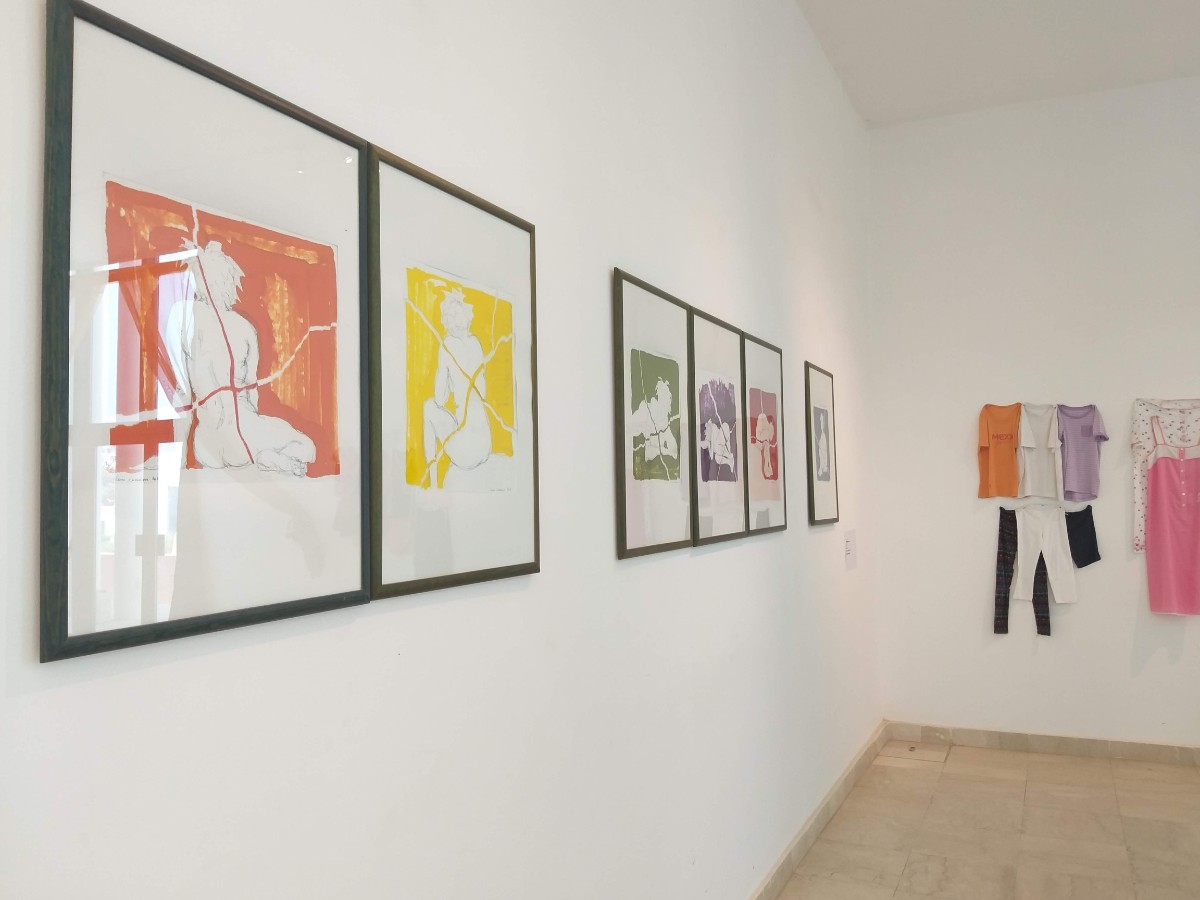
Inside the Musee de la Femme, Senegal Image: Travel with Clem
The Henriette Bathily Women’s Museum is an African Museum located in Dakar, Senegal, and dedicated to the Senegalese woman. The museum is named after a Senegalese public figure, Henriette Reyane Bathily, born in Kaolack (one of Senegal’s trade villages) in 1927.
Henriette Bathily was known as a radio and TV personalities and was one of the first Senegalese women to get a scholarship to study in France in 1947. She was also the first West African female to be at the head of an African ballet group. Due to her involvement in public life, activities and issues pertaining to women, she was celebrated and recognized with the naming of the museum after her. Today, the Museum of the African Woman, first of its kind in Senegal, hosts exhibitions all year round, including a special exhibition (planned this weekend) for the Internal Women’s Day.
Contributed by Clem at Travel with Clem | Twitter
Cascades Female Factory, Tasmania, Australia
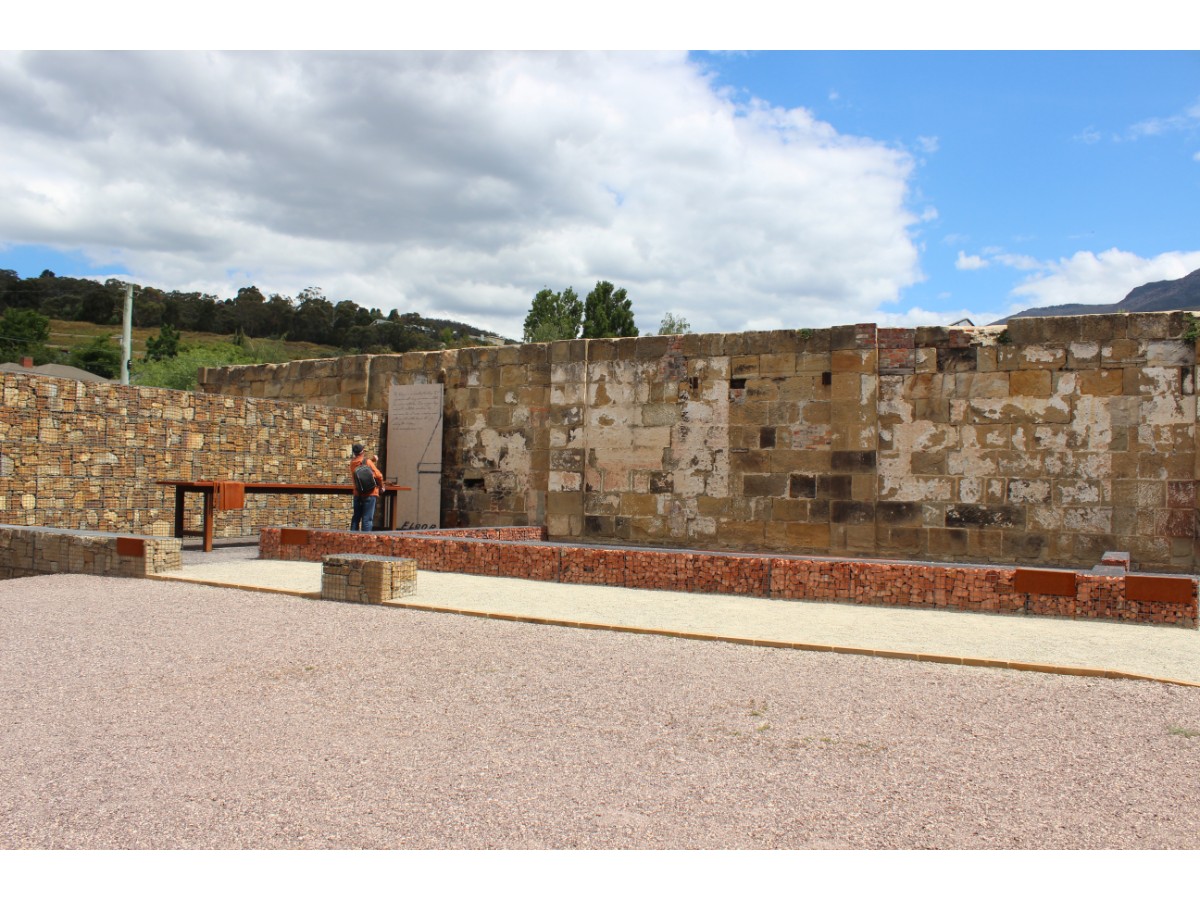
The remains of the Women’s Factory in Tasmania Image: World Unlost
This place pays tribute to a very different group of women. Outcasts, criminals and ‘fallen women’ made up many of the 25,000 female convicts transported to Australia from Great Britain and Ireland between 1788 and 1868. Cascades Female Factory, a World Heritage listed site built in 1828, is one of the few places in Australia where these women’s stories are told.
Set in a quiet corner of Hobart, Cascades Female Factory was a place of punishment, of work (namely laundry, needlework, and sewing blankets), a hiring depot, and lodging for the sick, infirm and pregnant convict women of Tasmania. And it was a place of great suffering.
Confined within its high walls, convict women were subjected to overcrowding and disease. Re-offenders faced further punishments of hard labour, head-shaving and sometimes being forced to wear heavy, spiked iron collars. Death rates were so excessive here that several inquests were held. Unfortunately, most of the buildings that once imprisoned the women, and indeed often their children, were later demolished – revealing in itself, no?
Little historic fabric survives today except for the matron’s cottage, three of the five original yards (where ‘footprints’ of the former buildings are etched on the ground), and ruins of the imposing perimeter wall. But it remains a moving, thought-provoking place to visit and reflect on the suffering – and spirit – of its former residents.To really appreciate the history of the site, take either a heritage tour or the Her Story tour, an immersive on-site theatrical experience.
Contributed by Sarah at World Unlost
L. M. Montgomery Museums, Canada
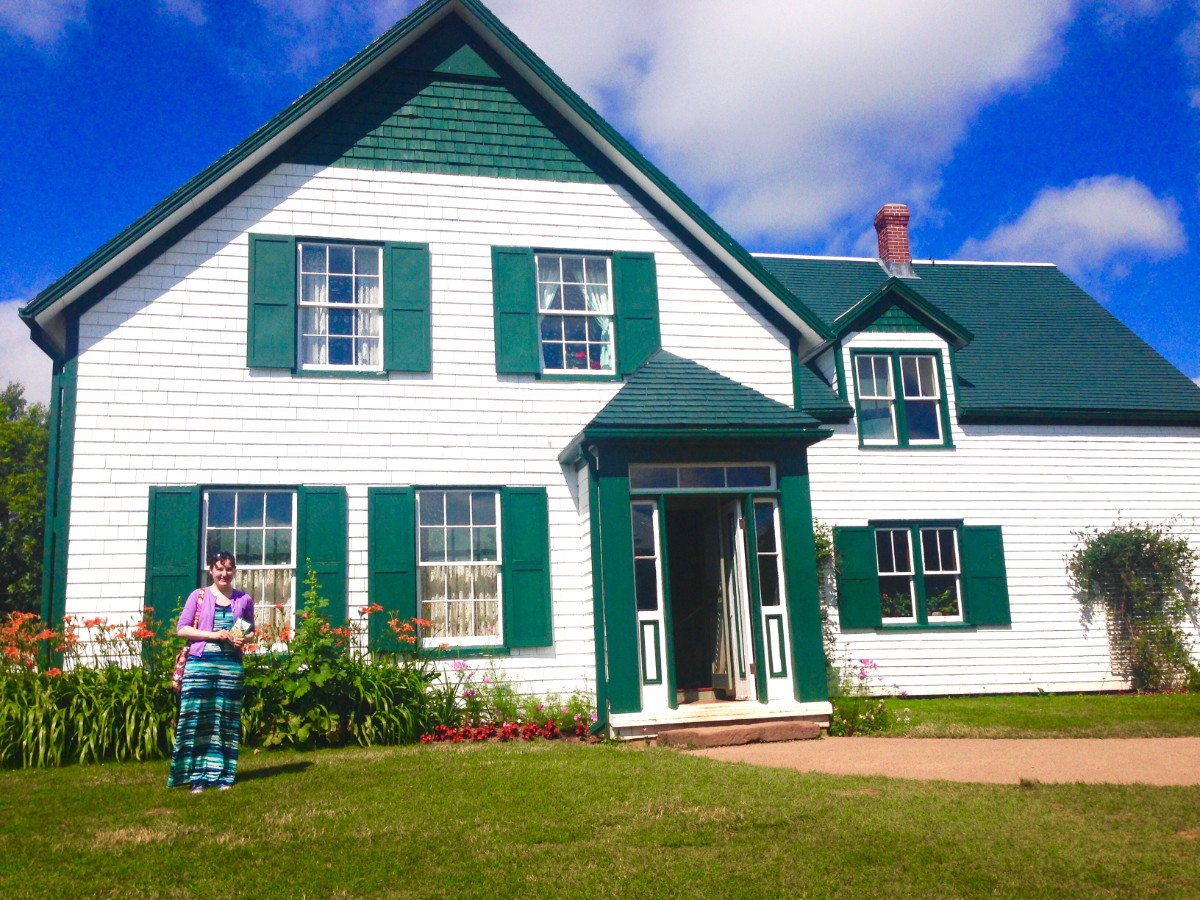
The Anne of Green Gables Heritage house, Canada Image: A Suitcase Full of Books
Lucy Maud Montgomery is most famous for being the author of Anne of Green Gables. Thanks to her novels about the ever-optimistic red-headed orphan in which she describes Prince Edward Island, Canada as “the prettiest place in the world,” visitors flock to the island each summer to visit the numerous museums devoted to the author. A lesser known fact, is that the eighth and final book in the Anne series, Rilla of Ingleside, is the only written account from a female perspective of life on the Canadian homefront during World War I. Thankfully, due to Anne, several of the houses Montgomery lived in at various points in her life are now museums so you can see just how she and other women of her time were living up to and including the war years.
The house in which Montgomery was born, as well as a couple of family homes of her relatives who she would often visit, have been preserved and restored with furniture, appliances, and clothes appropriate to the time period the original families inhabited the houses. These include The L. M. Montgomery Birth House museum, the Green Gables Heritage Place, and the Anne of Green Gables Museum. The Green Gables barn buildings have also been restored to give some idea of both the family’s daily duties and the community’s economic way of life. These and a few other museums on the island will give you a good idea of what home life on Prince Edward Island looked like in the early 1900s.
To read more about visiting PEI and the L. M. Montgomery museums check out this post: Plan the Perfect Anne of Green Gables Vacation
Contributed by Elizabeth at A Suitcase Full of Books | Instagram
Amália Rodrigues’ House, Lisbon, Portugal
Amália Rodrigues was known as the Queen of Fado. Born into a humble family, she became a national icon and brought worldwide recognition to fado — a typical music genre from Portugal. She was born in Lisbon, the capital of Portugal, and lived there her whole life. During her career, which lasted more than 50 years, she performed in sold-out venues all over the world.
When she passed away in 1999, she became the first woman to be buried in the National Pantheon — the final resting place for Portugal’s most important figures.
Two years after her death, her house in the São Bento neighborhood where she lived and died was turned into a museum devoted to her. The house is filled with her costumes, jewelry, musical instruments and other personal possessions. Even her pet parrot, Chico, still lives there.
A café serving healthy lunches is attached to the museum, and if you eat your lunch in the back courtyard you will likely have Chico as company.
A guided tour in Portuguese or English is included in the price of the ticket to the museum. This is a great opportunity for visitors to Lisbon to learn about Portugal’s most loved fadista and to see how she lived quite modestly, despite her fortune and fame.
Contributed by Wendy at The Nomadic Vegan | Instagram
Harriet Tubman Monument, Harlem, USA
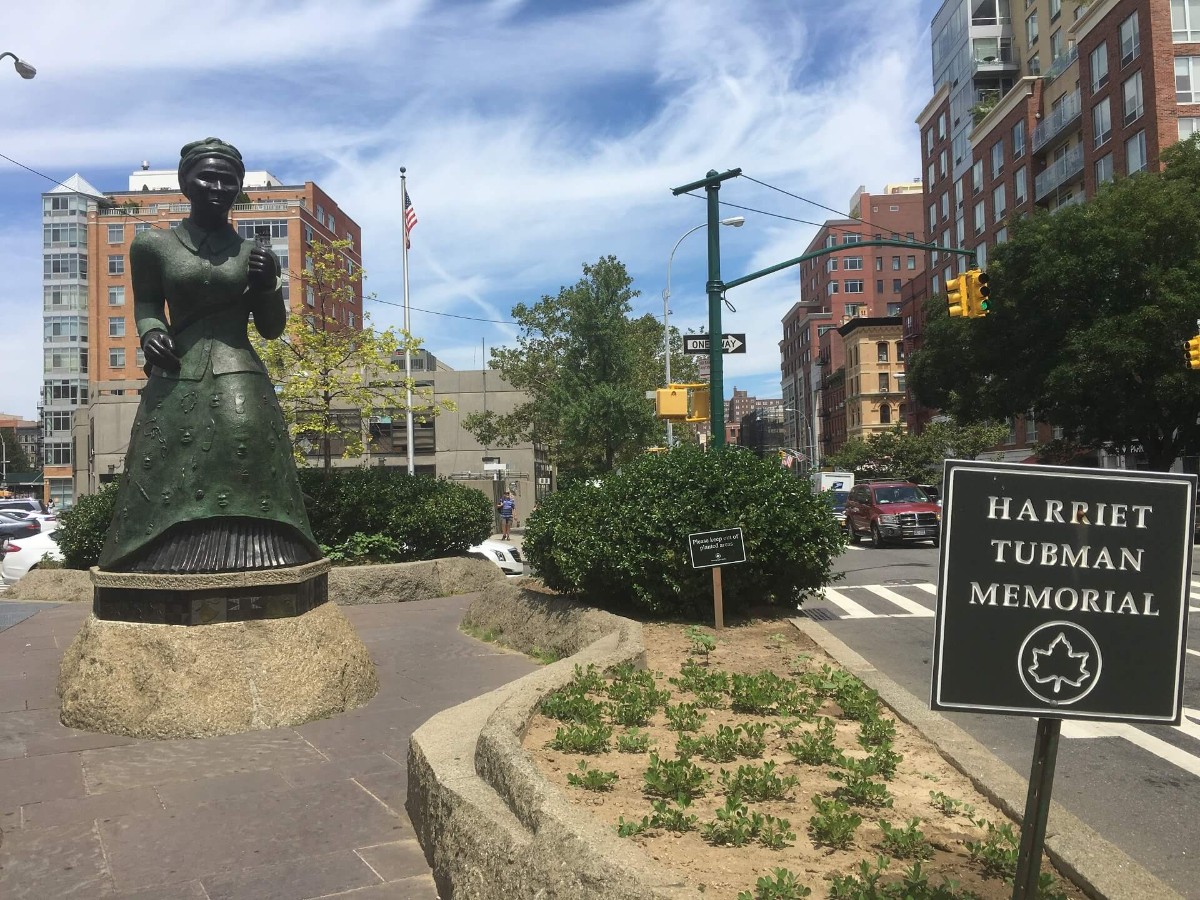
The statue of Harriet Tubman in Harlem, New York City Image: Travels with Talek
Harriet Tubman is one of the most respected and widely-known figures in American History. Born a slave in Maryland circa 1820, she escaped to freedom in Pennsylvania in 1849. She proceeded to dedicate her life to leading hundreds of other slaves out of slavery in the plantation system and to freedom using a secret and complex network of safe houses that came to be known as the underground railroad.
During the American Civil War Harriet Tubman continued to advocate for slaves and was a leading abolitionist. She also worked for the Union Army as a nurse and a spy. While in this capacity she became a scout and was the first woman to lead an armed expedition in the war. She was instrumental in a raid that freed over 700 slaves in the south. Harriet Tubman died on March 10, 1913 in Auburn, New York and was buried there in Fort Hill Cemetery with military honors.
Her legacy lives on in the many schools named after her. A museum dedicated in her honor can be visited in Cambridge, Massachusetts. The movie, A Woman Called Moses, was made to commemorate her. In 2008 the City of New York unveiled a monument to Harriet Tubman in Harlem. It represents her great accomplishments despite tremendous obstacles.
Val-Kill House, Hudson Valley, NY State, USA
Eleanor Roosevelt was the wife of the U.S. president Franklin D. Roosevelt. FDR, as he is commonly referred to, served as president throughout much of the great depression and the Second World War and was the only president to serve four terms. However, Eleanor was much more than just a wife; she was a powerful woman in her own right. As the first lady, she carved a role for herself independently of her husband, as well as having a significant effect on his work. Following the end of his presidency, Eleanor served as the U.S. delegate to the United Nations in the first seven years of its existence.
Her former house Val-Kill is located in Hyde Park, in New York State’s Hudson Valley about two hours north of New York City. It is a National Historic Site. Her husband’s house and the presidential library are nearby, but Eleanor lived separately in this small, simple house that is full of personal artefacts and filled with information about her. Visiting Val-kill is a fascinating insight into the life of this extraordinary woman.
Contributed by James at Travel Collecting | Pinterest
Margaret Mitchell House “The Dump”, Atlanta, USA
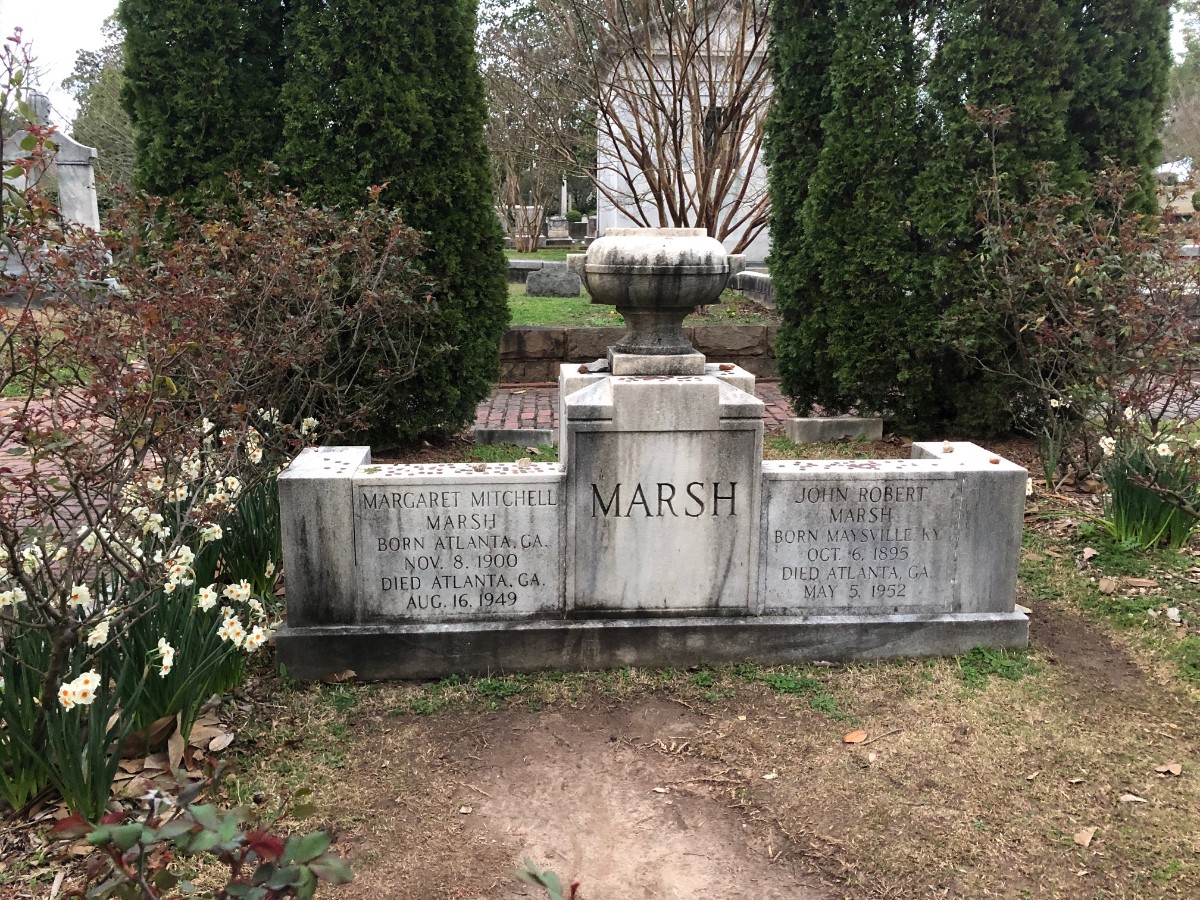
Oakland Cemetery, Atlanta where Margaret Mitchell is buried Image: Nancy
Many know Atlanta as the home of Coca-Cola, the birthplace of Martin Luther King Jr., or the host of the 1996 Olympic Games. But, what many don’t know, it is the birthplace and lifelong home of Margaret Mitchell, author of Gone with the Wind, an American classic.
Margaret’s mother was president of the Georgia Equal Suffrage League. A passionate campaigner for women’s rights she urged her daughter to get a good education and be able to support herself. While Margaret did attend Smith College in Massachusetts, she only finished her first year before returning to Atlanta.
Later, she went to work as a reporter for the Atlanta Journal Constitution during a time when most
debutantes were not in the workforce. After breaking her ankle in 1926, Margaret began writing Gone with the Wind over the course of 3 years while recovering from her injury in her home she dubbed “The Dump”. During a visit to Atlanta, you can tour “The Dump” and learn why Margaret wasn’t one of the “good girls” of Atlanta.
Gone with the Wind would end up garnering her the Pulitzer Prize for Fiction in 1937, but it would be the only novel she would ever write. When Margaret was 48, she succumbed to injuries from a car hitting her while crossing the famous Peachtree Street in Atlanta. She is buried at Oakland Cemetery, which is a historic landmark within the city. Oakland is home to 9 famous residents including Margaret Mitchell (Marsh), Bobby Jones, and Maynard Jackson.
Contributed by Nancy at Checking It Off the List | Pinterest | Facebook
Marie Curie Museum in Warsaw, Poland
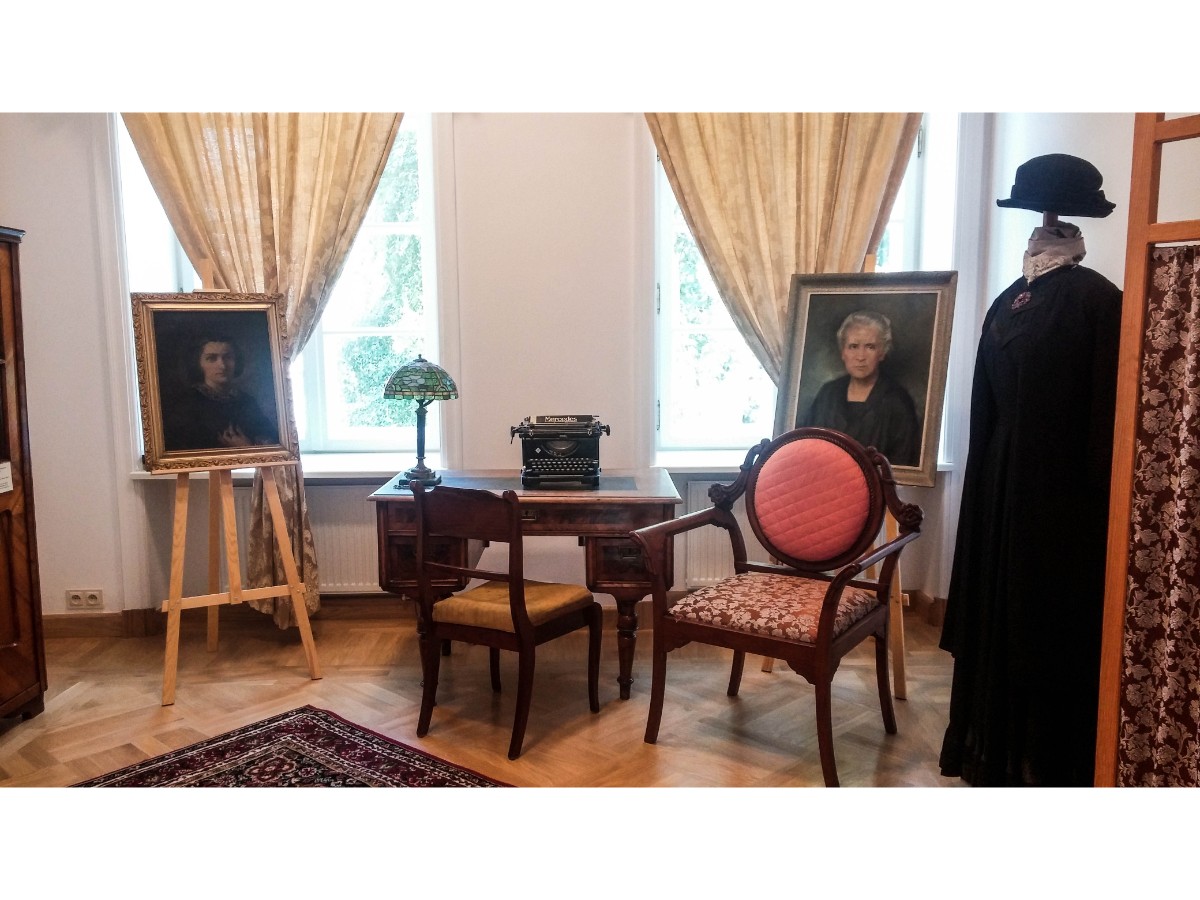
Inside Marie Curie’s House in Warsaw Image: Daniela Travels
Maria Skłodowska-Curie, most well known as Marie Curie, was a scientist known to discover polonium and radium. She is the only woman to be awarded the Nobel Prize twice for physics and chemistry. It is quite common to think that she was French by her last name, but to my surprise, I discovered that she was Polish while visiting the country last summer.
In the old town of Warsaw lies a small museum full of information and memorabilia from the life of one of the most distinguished citizens of Poland. The museum was started by Marie’s sisters to chronicle her life and achievements prior to World War II. The sisters collected family souvenirs, letters, research, personal items, furniture, photos and newspaper articles related to Madame Curie to open the museum. Sadly, everything was destroyed during the Warsaw Uprising in 1944, in which Poles unsuccessfully tried to banish the German army and control the city before it was occupied by the Soviet army.
The museum is located in what once was a girl’s boarding school. The upper story housed the boarding school while an annex was the house of Marie Curie’s family, and where she was born. A year later, the family moved. The building today has a commemorative plaque noting her birthplace and achievements.
Finally, the efforts of the Polish Chemical Society to chronicle Marie Curie’s genius paid off in 1967. The museum was funded in 1967, celebrating the 100th anniversary of Madame Curie’s birth. Today, the museum remains in the care of the Polish Chemical Society, of which Curie was an honorary member.
The Polish efforts to keep Maria Skłodowska-Curie alive are admirable. The museum is small and highlights key events in the life of this great scientist and her husband. The museum deserves a visit as you learn about how Curie managed adversity and obstacles to become a women scientist.
By the way, Curie got her last name from her French scientist husband Pierre Curie. She received her first Novel Prize as Marie Curie and her second as Maria Skłodowska in order to honor her Polish roots.
Contributed by Daniela at Daniela Travels | Instagram | Facebook
Women’s Museum, Merano, Italy
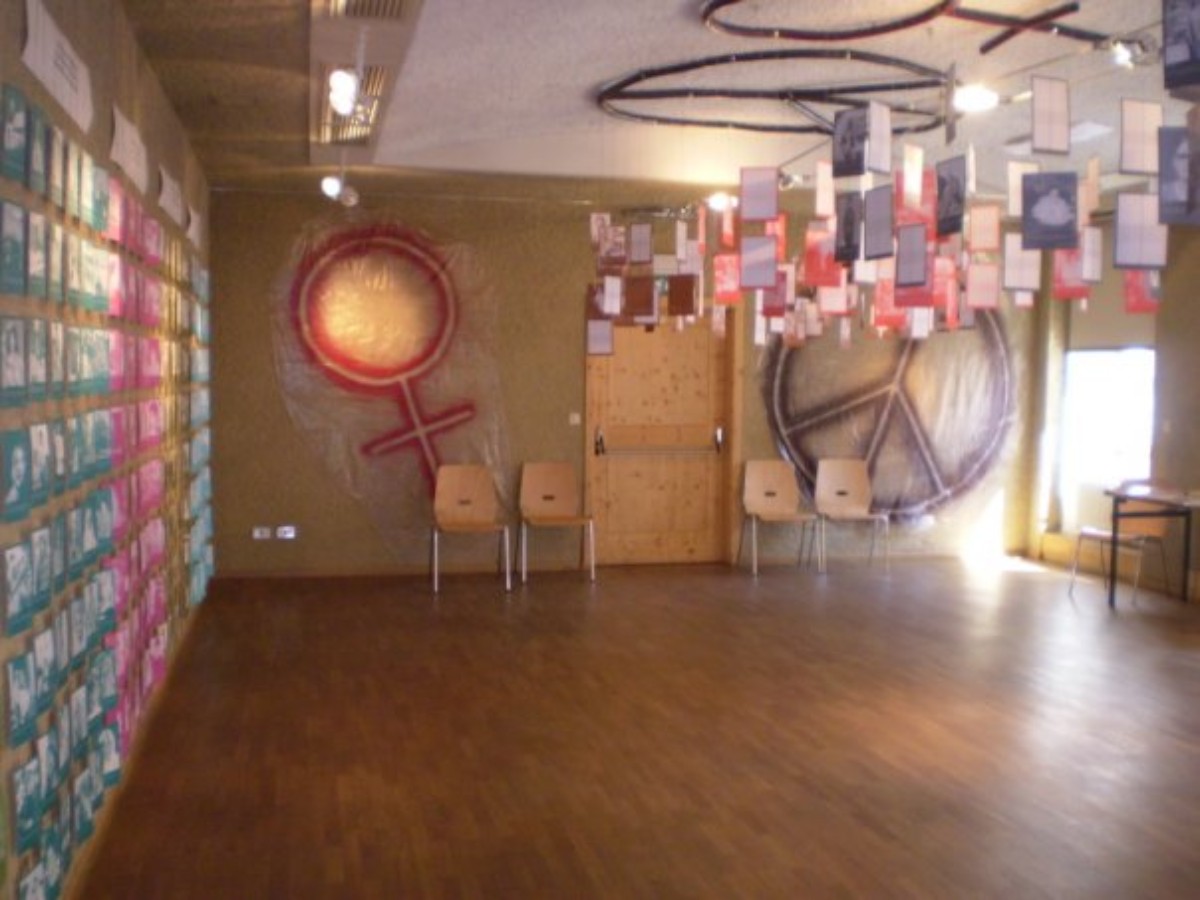
Inside the Women’s Museum, Merano, Italy Image: Under Flowery Sky
Merano is a real gem of a town located at the border of Italy and Austria, it is known by its flowery decorated streets and sculptures, alpine image and quite a natural outlook. This museum was founded in 1988. by Evelyn Ortner, an Austrian lady and passionate collector. It shows the permanent exhibition from a female point of view, its development to everyday life and today’s role of the women. It occupies as well some special exhibition and holds events. In 2008, the museum in Merano was a host of the first international congress of women’s museums. The special recognition is given to the clothes and fashion throughout history. It’s a great pleasure to have a Women’s museum in Merano, the only one of that kind in Italy with the close proximity of all European destinations.
Contributed by Gabrijela at Under Flowery Sky | Facebook
War and Women’s Human Right’s Museum, Seoul, South Korea
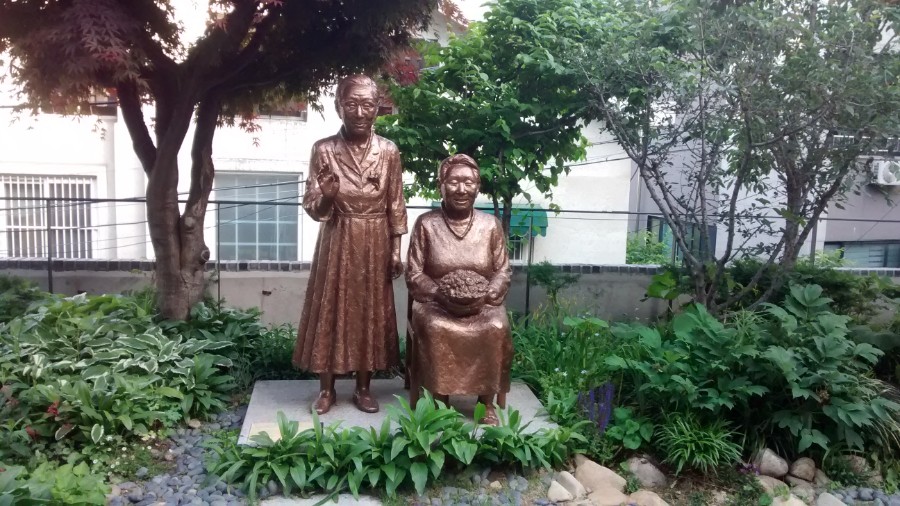
Statue of former Comfort Women outside the War and Women’s Human Rights Museum, Seoul
If you’re in South Korea, don’t miss a visit to the War and Women’s Human Rights Museum, Seoul. This powerful, eye-opening small museum tells the harrowing tale of the South Korean “comfort women” during the Second World War. Historical artefacts and moving eye-witness accounts undercover the tragic history of women abused by the Japanese Army during the war. The museum is incredibly well curated and although the museum tells a tragic tale, you leave with a celebratory sense that the women finally found their voices. Read my in-depth post here: War and Women’s Human Rights Museum, Seoul
Vietnamese Women’s Museum, Hanoi, Vietnam
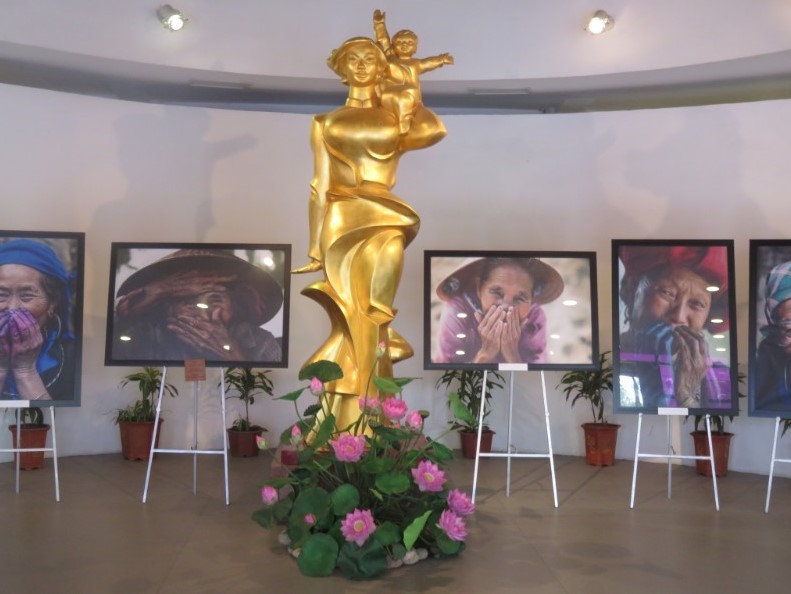
A grand entrance to the Vietnamese Women’s Museum, Hanoi. A celebration of women around Vietnam.
The Vietnamese Women’s Museum in Hanoi is a vibrant, engaging and well-known celebration of womanhood. Permanent exhibitions look at women’s contributions to Vietnamese history, artefacts and textiles made by women and the many cottage industries that women in Vietnam ran from their homes. Downstairs, there’s a little education room for children and temporary exhibition space. To read more visit our post on the Vietnamese Women’s Museum, Hanoi
Yay! You got to the end of this mammoth post which means that you must be a) really interested in women’s history and b) not have much on today. Over 18 other fantastic travel bloggers helped me put together this epic post – it wouldn’t have been possible without them. If you have time, go and check out some of their amazing travel blogs and social media links.
And of course, if travelling and women’s history are your type of thing then subscribe to World for Girl (sign-up form in sidebar) and follow us at Facebook | Pinterest| Twitter to stay up-to-date with our latest articles and posts.
You may also be interested in our Women’s History posts on 54 Female Explorers from History that Your Children NEED to learn about and Women’s History: FREE online learning resources.
And if you have kids don’t forget to grab a FREE copy of our fun, educational activity book Girls Explore Too! about female explorers and adventurers.
Thanks for reading!
No time to read now pin for later!
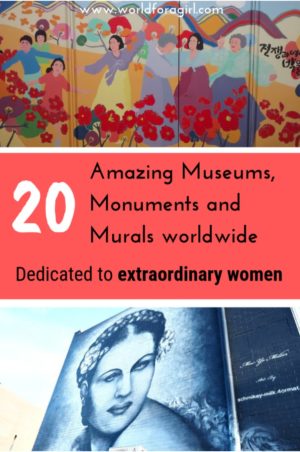
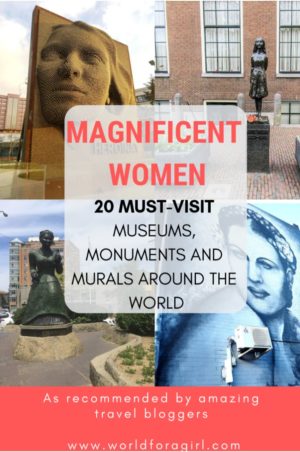

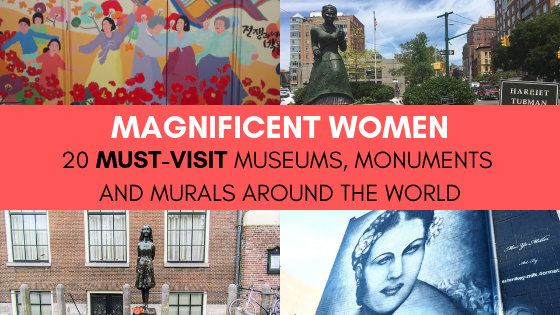
9 Comments on “Magnificent Women: Monuments, Museums and Murals”
I really enjoyed this. What a fantastic collection of remarkable women.
Thank you for the concept and for bringing it to fruition.
It was a pleasure to work with you, Talek! I love your piece on the Harriet Tubman statue in Harlem. Thank you for contributing!
Hi Kirsty, thank you for sharing this! It truly is amazing to have such a great resource on museums dedicated only to women! This is definitely something that I would look forward to visiting in any given country. I did not know there were so many, and I am just as excited and impressed to learn about all these! Thanks again for sharing, and thanks for the feature!
Thank you, Clem. Your contribution on the Women’s Museum in Senegal was fantastic. I had no idea about it before. Yes, it’s amazing how many museums and monuments dedicated to women there are! I definitely could find enough material to write a Part II…
Thanks for letting us be a part of this! The perfect piece for International Women’s Day! Plus, now we have so many inspiring places we need to go visit in the future (hey, it’s as good a way as any to decide where to go).
I recently finished reading to book Comfort Woman by Nora Okja Keller, so the War and Women’s Human Right’s Museum in Seoul is of particular interest to me. It’s a shame I missed it while I was there!
Love your site, very inspiring!
Thank you so much for contributing, Dagney. Comfort Women is high on my ‘what to read next’ list. The War and Women’s Human Right’s Museum in Seoul museum is incredibly moving and definitely worth a visit – I hope you get a chance to visit next time. Thanks for your kind words about my site.
Great post! You gathered together wonderful pieces on such a great variety of women from across the world — now I have a lot more places to visit!
Thank you! Yep, I’ve added so many places to my travel bucket list too!
Pingback: Discover Atlanta with Atlantans - Checking It Off the List